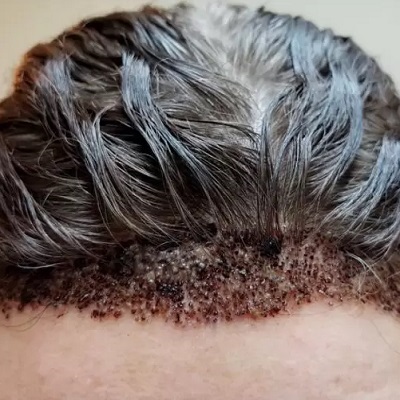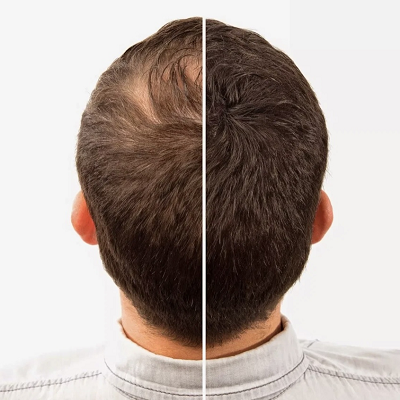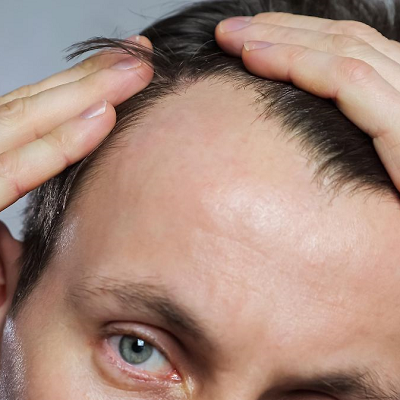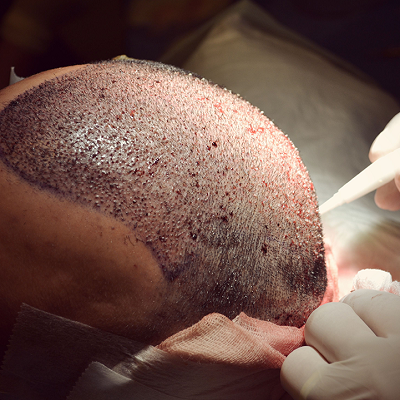
Hair transplant is not only a hair restoration therapy but also a hope for many individuals facing baldness or alopecia. Moreover, it promises increased growth and outcomes that seem natural. Furthermore, like any other medical procedure, it may sometimes fail if not performed correctly. Hence, knowing the probable hazards, their causes, and how to prevent issues can help one make an informed decision regarding this therapy. So, in this blog, we will discuss “Can A Hair Transplant Go Wrong?”
What Is a Hair Transplant?
Usually from one place of the body—usually the back of the head—hair cells are transferred from one area to another during a hair transplant to conceal baldness or thinning hair. Two common approaches to do it are:
- Under FUT, often known as “Follicular Unit Transplantation,” a strip of skin is removed to gather hair follicles.
- Standing for “Follicular Unit Extraction,” FUE removes individual hair follicles for implanting.
- Both approaches aim to have hair naturally growing back in areas lost.
Can A Hair Transplant Go Wrong?
Hence, Can A Hair Transplant Go Wrong? Indeed, a hair transplant may result in anything negative; yet, if the surgeon is a qualified and experienced professional, the likelihood of such an occurrence is low. However, among the potential issues are:
Poorly Positioned Hairlines:
If the surgeon lacks knowledge of how to create a hairline that complements your face form, you might find yourself with an unusual one.
Infections:
If appropriate cleaning is neglected before, during, and after the treatment, infections might occur in the treated regions.
Scarring:
Particularly after the FUT technique, scars may show up should the restoration process deviate from expectations.
Uneven Hair Growth:
Transported hair might sometimes show up haphazardly, giving the region an uneven appearance.
Graft Rejection:
Sometimes the transplanted follicles may not develop due to handling or inadequate blood supply.
What Causes a Hair Transplant to Go Wrong?
Several factors could increase the likelihood that a hair transplant might fail:
- Inexperienced Surgeon: Someone who lacks sufficient knowledge of hair regeneration may put in the incorrect grafts or receive negative outcomes.
- Unsuitable Candidates: Those with certain medical issues or those without enough donated hair may not be ideal candidates for a transplant.
- Ignoring Aftercare Instructions: Problems might arise from neglecting oneself after surgery, including maintaining a clean head and avoiding direct sun.
- Poor Facility Standards: Clinics lacking cleanliness or equipment are more prone to cause infections and other impacts.
How to Avoid a Hair Transplant Gone Wrong?
Following these guidelines will help to ensure that your hair transplant goes perfectly:
- Invest much time in searching clinics and physicians. Moreover, look for board-certified experts with a successful track record.
- Make an appointment to see if the procedure might be a suitable match for you.
- Use the post-surgery advice of your surgeon to help your body recover and your hair grows back letter-wise.
- Avoid low-cost facilities that compromise expertise or safety.
Signs Your Hair Transplant Is Not Going Well:
If you see any of these indicators, you should immediately phone your surgeon:
- Discomfort or stiffness not gone after the recommended recovery period.
- Too much pus or blood at the surgical site.
- Transplanted hair is either not growing at all or is falling out at will.
- hair positioning that doesn’t seem natural and scars visible.
What Are the Risks of a Hair Transplant?
Though they are not common, you should be aware of the hazards even in this regard:
- Suffering in the region of therapy momentarily.
- Having a red or itching head.
- Shock loss is the phenomenon wherein hair already present falls out temporarily after treatment.
- Unsatisfactory bodily consequences that need correction.
How to Ensure the Best Results from a Hair Transplant?
- You won’t obtain advantages straight away; it will take time. Most often, complete development occurs between the ages of 12 and 18 months.
- Eat a good diet, drink plenty of water, and avoid smoking to let your body mend and hair grow.
- Don’t scratch, wear tight caps, or expose your head directly to sunlight while you’re recuperating.
- Treatments like PRP therapy can provide the desired results.
Final Thoughts:
Although a hair transplant may go wrong sometimes. However, this is only extremely unusual when a qualified expert performs the procedure. Furthermore, most issues arise when customers select less expensive facilities, hire physicians lacking experience, or follow inadequate treatment guidelines.
By completing a lot of study about your surgery, knowing the procedure, and following the care recommendations afterwards, you may reduce your risks and receive natural-looking long-lasting results. A hair transplant is a major decision; so, take your time and consider what you want to accomplish to maximize the outcomes.
Consult with expert hair surgeon Dr Naveed Azhar at RCS-PK for effective hair restoration with long-lasting results.






